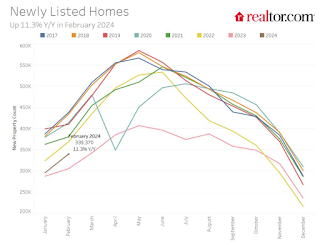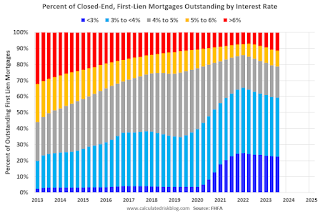Uncategorized
Bitcoin aims for $25K as institutional demand increases and economic data soothes investor fears
Strong corporate earnings and investors’ anticipation of a Federal Reserve pivot are helping to cement the case for risk assets like Bitcoin.
…

Strong corporate earnings and investors’ anticipation of a Federal Reserve pivot are helping to cement the case for risk assets like Bitcoin.
Bitcoin (BTC) price broke above $22,500 on Jan. 20 and has since been able to defend that level — accumulating 40.5% gains in the month of January. The move accompanied improvements in the stock market, which also rallied after China dropped COVID-19 restrictions after three years of strict pandemic controls.
E-commerce and entertainment companies lead as the year-to-date market performers. Warner Bros (WBD) added 54%, Shopify (SHOP) 42%, MercadoLibre (MELI) 41%, Carnival Corp (CCL) 35% and Paramount Global (PARA) managed a gain 35% so far. Corporate earnings continue to attract investors' inflow and attention after oil-producer Chevron posted the second-largest annual profit ever recorded, at $36.5 billion.
More importantly, analysts expect Apple (AAPL) to post a mind-boggling $96 billion in earnings for its 2022 on Feb. 2. The $2.3 trillion tech company results vastly surpasses the $67.4 billion profit that Microsoft (MSFT) reported in 2022. Strong earnings also help to validate the current stock valuations, but they do not necessarily guarantee a brighter future for the economy.
A more favorable scenario for risk assets came largely from a decline in leading economic indicators, including homebuilder, trucking surveys and contracting Purchasing Managers Index (PMI), according to Evercore ISI's senior managing director, Julian Emanuel.
According to the research from financial services firm Matrixport, American institutional investors represent some 85% of the recent purchasing activity. This means large players are "not giving up on crypto." The study considers the returns occurring during U.S. trading hours but expects the outperformance of altcoins relative to Bitcoin.
From one side, Bitcoin bulls have reasons to celebrate after its price recovered 49% from the $15,500 low on Nov. 21, but bears still have the upper hand on a larger time frame since BTC is down 39% in 12 months.
Let's look at Bitcoin derivatives metrics to better understand how professional traders are positioned in the current market conditions.
Asia-based stablecoin demand approaches the FOMO region
The USD Coin (USDC) premium is a good gauge of China-based crypto retail trader demand. It measures the difference between China-based peer-to-peer trades and the United States dollar.
Excessive buying demand tends to pressure the indicator above fair value at 100%, and during bearish markets, the stablecoin's market offer is flooded, causing a 4% or higher discount.

Currently, the USDC premium stands at 3.7%, down from a 1% discount two weeks prior, indicating much stronger demand for stablecoin buying in Asia. The indicator shifted gears after the 9% rally on Jan. 21, causing excessive demand from retail traders.
However, one should dive into BTC futures markets to understand how professional traders are positioned.
The futures premium has held a neutral stance since Jan. 21
Retail traders usually avoid quarterly futures due to their price difference from spot markets. Meanwhile, professional traders prefer these instruments because they prevent the fluctuation of funding rates in a perpetual futures contract.
The three-month futures annualized premium should trade between +4% to +8% in healthy markets to cover costs and associated risks. Thus, when the futures trade below such a range, it shows a lack of confidence from leverage buyers — typically, a bearish indicator.

The chart shows positive momentum for the Bitcoin futures premium after the basis indicator broke above the 4% threshold on Jan. 21 — the highest in five months. This movement represents a drastic change from the bearish sentiment presented by the futures' discount (backwardation) present until late 2022.
Related: Bitcoin price is up, but BTC mining stocks could remain vulnerable throughout 2023
Traders are watching to see if the Fed broadcasts plans to pivot
While Bitcoin’s 40.5% gain in 2023 look promising, the fact that the Nasdaq tech-heavy index rallied 10% in the same period raises suspicions. For instance, the street consensus is a pivot on the Federal Reserve (FED) quantitative tightening policy at some point in 2023 — meaning interest rates would no longer be increased.
Bitcoin derivatives and stablecoin demand exited the panic levels but if the FED's expected soft landing takes place, the risk of a recessionary environment will limit stock markets' performance and hurt Bitcoin's “inflation protection” appeal.
Currently, the odds favor bulls as leading economic indicators show a moderate correction — enough to ease the inflation but not especially concerning as solid corporate earnings confirm.
The views, thoughts and opinions expressed here are the authors’ alone and do not necessarily reflect or represent the views and opinions of Cointelegraph.
This article does not contain investment advice or recommendations. Every investment and trading move involves risk, and readers should conduct their own research when making a decision.
nasdaq stocks pandemic covid-19 bitcoin crypto btc crypto stock markets oilUncategorized
Part 1: Current State of the Housing Market; Overview for mid-March 2024
Today, in the Calculated Risk Real Estate Newsletter: Part 1: Current State of the Housing Market; Overview for mid-March 2024
A brief excerpt: This 2-part overview for mid-March provides a snapshot of the current housing market.
I always like to star…

A brief excerpt:
This 2-part overview for mid-March provides a snapshot of the current housing market.There is much more in the article.
I always like to start with inventory, since inventory usually tells the tale!
...
Here is a graph of new listing from Realtor.com’s February 2024 Monthly Housing Market Trends Report showing new listings were up 11.3% year-over-year in February. This is still well below pre-pandemic levels. From Realtor.com:
However, providing a boost to overall inventory, sellers turned out in higher numbers this February as newly listed homes were 11.3% above last year’s levels. This marked the fourth month of increasing listing activity after a 17-month streak of decline.Note the seasonality for new listings. December and January are seasonally the weakest months of the year for new listings, followed by February and November. New listings will be up year-over-year in 2024, but we will have to wait for the March and April data to see how close new listings are to normal levels.
There are always people that need to sell due to the so-called 3 D’s: Death, Divorce, and Disease. Also, in certain times, some homeowners will need to sell due to unemployment or excessive debt (neither is much of an issue right now).
And there are homeowners who want to sell for a number of reasons: upsizing (more babies), downsizing, moving for a new job, or moving to a nicer home or location (move-up buyers). It is some of the “want to sell” group that has been locked in with the golden handcuffs over the last couple of years, since it is financially difficult to move when your current mortgage rate is around 3%, and your new mortgage rate will be in the 6 1/2% to 7% range.
But time is a factor for this “want to sell” group, and eventually some of them will take the plunge. That is probably why we are seeing more new listings now.
Uncategorized
Pharma industry reputation remains steady at a ‘new normal’ after Covid, Harris Poll finds
The pharma industry is hanging on to reputation gains notched during the Covid-19 pandemic. Positive perception of the pharma industry is steady at 45%…

The pharma industry is hanging on to reputation gains notched during the Covid-19 pandemic. Positive perception of the pharma industry is steady at 45% of US respondents in 2023, according to the latest Harris Poll data. That’s exactly the same as the previous year.
Pharma’s highest point was in February 2021 — as Covid vaccines began to roll out — with a 62% positive US perception, and helping the industry land at an average 55% positive sentiment at the end of the year in Harris’ 2021 annual assessment of industries. The pharma industry’s reputation hit its most recent low at 32% in 2019, but it had hovered around 30% for more than a decade prior.
“Pharma has sustained a lot of the gains, now basically one and half times higher than pre-Covid,” said Harris Poll managing director Rob Jekielek. “There is a question mark around how sustained it will be, but right now it feels like a new normal.”
The Harris survey spans 11 global markets and covers 13 industries. Pharma perception is even better abroad, with an average 58% of respondents notching favorable sentiments in 2023, just a slight slip from 60% in each of the two previous years.
Pharma’s solid global reputation puts it in the middle of the pack among international industries, ranking higher than government at 37% positive, insurance at 48%, financial services at 51% and health insurance at 52%. Pharma ranks just behind automotive (62%), manufacturing (63%) and consumer products (63%), although it lags behind leading industries like tech at 75% positive in the first spot, followed by grocery at 67%.
The bright spotlight on the pharma industry during Covid vaccine and drug development boosted its reputation, but Jekielek said there’s maybe an argument to be made that pharma is continuing to develop innovative drugs outside that spotlight.
“When you look at pharma reputation during Covid, you have clear sense of a very dynamic industry working very quickly and getting therapies and products to market. If you’re looking at things happening now, you could argue that pharma still probably doesn’t get enough credit for its advances, for example, in oncology treatments,” he said.
vaccine pandemic covid-19Uncategorized
Q4 Update: Delinquencies, Foreclosures and REO
Today, in the Calculated Risk Real Estate Newsletter: Q4 Update: Delinquencies, Foreclosures and REO
A brief excerpt: I’ve argued repeatedly that we would NOT see a surge in foreclosures that would significantly impact house prices (as happened followi…

A brief excerpt:
I’ve argued repeatedly that we would NOT see a surge in foreclosures that would significantly impact house prices (as happened following the housing bubble). The two key reasons are mortgage lending has been solid, and most homeowners have substantial equity in their homes..There is much more in the article. You can subscribe at https://calculatedrisk.substack.com/ mortgage rates real estate mortgages pandemic interest rates
...
And on mortgage rates, here is some data from the FHFA’s National Mortgage Database showing the distribution of interest rates on closed-end, fixed-rate 1-4 family mortgages outstanding at the end of each quarter since Q1 2013 through Q3 2023 (Q4 2023 data will be released in a two weeks).
This shows the surge in the percent of loans under 3%, and also under 4%, starting in early 2020 as mortgage rates declined sharply during the pandemic. Currently 22.6% of loans are under 3%, 59.4% are under 4%, and 78.7% are under 5%.
With substantial equity, and low mortgage rates (mostly at a fixed rates), few homeowners will have financial difficulties.
-

 Uncategorized3 weeks ago
Uncategorized3 weeks agoAll Of The Elements Are In Place For An Economic Crisis Of Staggering Proportions
-

 International5 days ago
International5 days agoEyePoint poaches medical chief from Apellis; Sandoz CFO, longtime BioNTech exec to retire
-

 Uncategorized4 weeks ago
Uncategorized4 weeks agoCalifornia Counties Could Be Forced To Pay $300 Million To Cover COVID-Era Program
-

 Uncategorized3 weeks ago
Uncategorized3 weeks agoApparel Retailer Express Moving Toward Bankruptcy
-

 Uncategorized4 weeks ago
Uncategorized4 weeks agoIndustrial Production Decreased 0.1% in January
-

 International5 days ago
International5 days agoWalmart launches clever answer to Target’s new membership program
-

 Uncategorized4 weeks ago
Uncategorized4 weeks agoRFK Jr: The Wuhan Cover-Up & The Rise Of The Biowarfare-Industrial Complex
-

 Uncategorized3 weeks ago
Uncategorized3 weeks agoGOP Efforts To Shore Up Election Security In Swing States Face Challenges



















